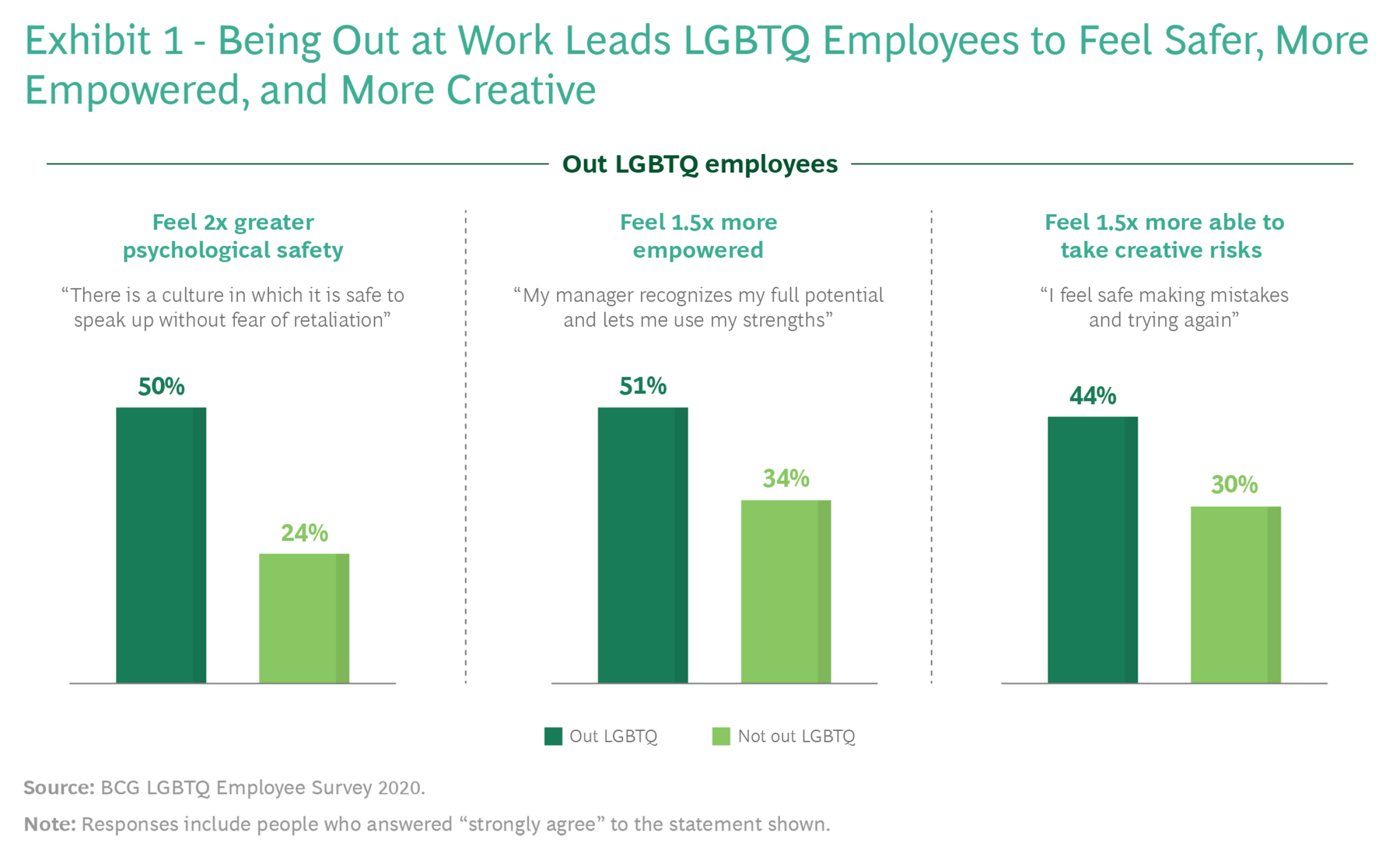Pride month is a great opportunity to start dialogues within your company about how to best support your LGBTQ+ employees. However, it is important to remember that these dialogues should not end with the month of June.
Rainbow washing during Pride
Many companies may show support for the LGBTQ+ community through their external practices, such as branding and advertising, but don’t stop and reflect on their internal initiatives. This is often called “rainbow washing,” which refers to the performative allyship. This can happen when companies change their branding to include LGBTQ+ symbols during Pride month, but do not take any other steps internally to make sure they are uplifting LGBTQ+ voices.
Pride today is largely a celebration of LGBTQ+ identities. However, it is still important to remember that the point of Pride is to amplify the voices of the LGBTQ+ community and push for equality. Showing external support for the LGBTQ+ community through branding and advertising helps celebrate these identities. But companies should also ensure they are making strides towards LGBTQ+ inclusion and equality by creating a culture where their LGBTQ+ employees feel safe and comfortable.
Consequences of emotional tax
Emotional Tax is the feeling of constantly being on guard due to one’s identity. This can be due to race, gender, sexual orientation, or any other identifying characteristic. A study by the Boston Consulting Group found that:
- 40% of employees who identify as LGBTQ+ are not out about their sexuality at work; however, 26% of these employees wish they could be.
- 75% of LGBTQ+ employees in this study reported that they experienced at least one negative interaction at work due to their sexuality.
- 41% revealed they experienced at least ten of these negative interactions.
This fear of discrimination leads to a perpetual feeling of being on guard, which can lead to health deficits and lowered productivity. BCG also found that employees who feel like they cannot be their authentic selves at work cannot give their best performance.
The power of promoting inclusion
On the positive side, making strides to increase inclusivity can help foster a safe space where employees feel comfortable expressing themselves. The BCG study found that employees who were out about their sexuality at work felt more psychologically safe, felt empowered within their work, and felt comfortable taking more creative risks. Additionally, Catalyst reported that higher feelings of inclusion lead to lower intent to leave a job, higher creativity, and higher likelihood of speaking up.

Setting measurable goals
What are measurable goals and how can companies make sure their LGBTQ+ employees feel included year round? Inclusion is subjective and therefore benchmarks for inclusion should capture the experiences of employees in the workplace. Reports based on demographics may be a good measure of existing diversity but are not necessarily a good indication of a company’s equity and inclusion practices. Tracking both quantitative and qualitative data ensures that diversity numbers are representative of whether employees actually feel included at work.
8 steps to promoting LGBQT+ inclusion year round
Here are some steps you can take to make sure your LGBTQ+ employees feel included year round:
- Measure the current state of your organization by identifying company policies, practices, and language both in the formal and informal settings. One way to examine the current state of company practices and employees’ experiences of inclusion is through a DEI survey.
- Use DEI metrics to identify what areas need the most improvement.
- Listen to your employees. Do they feel heard? Including their voices when implementing DEI policies and practices will create a culture where employees feel comfortable speaking up when they are unhappy. One way to do this is through brief weekly surveys that assess how employees are doing.
- Create realistic and measurable goals based on the data you have collected. Are these goals intersectional and adaptable? Where can you envision these goals being in 3 months? 1 year? 5 years?
- Define how you will put your goals into action. How will you change company policies, practices, and language to meet your goals? Have you allocated resources (time, money) and defined a project team to make these changes?
- Educate your employees on the importance of DEI through trainings and open discussions. This should include more than just implicit bias training, but also open discussions around awareness and empathy should be promoted.
- Create a space that is open to conversation and feedback so employees feel comfortable speaking up about negative experiences or ways the company can do better. Consider implementing a channel for anonymous reporting on inappropriate or discriminatory workplace behavior.
- Check in periodically to ensure you are making progress towards your goals. Continue to listen to your employees and encourage feedback.
A continuous process
Remember that improving DEI within your organization is an ongoing process and therefore there is always room for improvement. Pride month serves as an important reminder that there are still strides to be made to improve equality and inclusion for the LGBTQ+ community. However, remember that LGBTQ+ employees should feel safe, included, and uplifted every month of the year.

